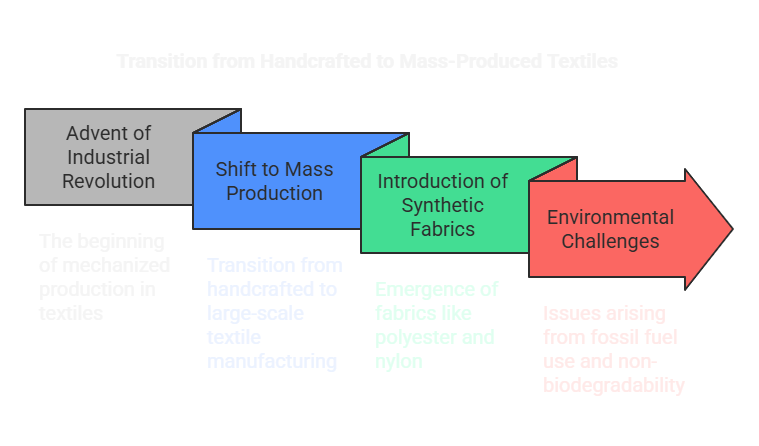Evolution of Sustainable Fabrics: From Ancient Times to Modern Innovations
In the ever-evolving landscape of fashion, sustainability has emerged as a critical focal point, influencing how we perceive and utilize fabrics. This article delves into the rich history of sustainable fabrics, tracing their evolution from ancient practices to contemporary innovations. We explore the significance of sustainability in fashion, the impact of the Industrial Revolution, and the groundbreaking advancements in fabric technology today. By examining case studies and future trends, we aim to provide a comprehensive understanding of sustainable fabrics and their pivotal role in shaping a more eco-conscious industry.
What is Sustainability in Fashion?
Sustainability in fashion refers to the practice of creating clothing and textiles in a manner that is environmentally friendly, socially responsible, and economically viable. This encompasses the entire lifecycle of a garment, from the sourcing of raw materials to the manufacturing processes, distribution, and eventual disposal. As consumers become increasingly aware of the environmental impact of their choices, the demand for sustainable fabrics has surged, prompting brands to rethink their production methods.

Why Sustainable Fabrics Matter Today
The fashion industry is one of the largest polluters globally, contributing significantly to water pollution, greenhouse gas emissions, and waste generation. Sustainable fabrics offer a solution to these pressing issues by minimizing environmental impact and promoting ethical practices. By prioritizing sustainability, we can reduce our carbon footprint, conserve natural resources, and support fair labor practices. The importance of sustainable fabrics cannot be overstated, as they represent a crucial step towards a more responsible and eco-friendly fashion industry.
Purpose of This Article
This article aims to provide an in-depth exploration of the evolution of sustainable fabrics, highlighting key developments throughout history and examining modern innovations. By understanding the journey of sustainable textiles, we can better appreciate their significance in today’s fashion landscape and envision a more sustainable future.
Ancient Sustainable Practices
Textile Innovations of Early Civilizations
The roots of sustainable fabrics can be traced back to ancient civilizations, where textiles were crafted using natural materials sourced from the environment. Early societies, such as the Egyptians, Greeks, and Chinese, utilized fibers from plants like flax, cotton, and hemp, as well as animal fibers like wool and silk. These materials were not only biodegradable but also renewable, as they could be harvested without depleting the earth’s resources.
Natural Dyes and Biodegradability
In addition to the fibers themselves, ancient cultures employed natural dyes derived from plants, minerals, and insects to color their textiles. These dyes were not only vibrant but also environmentally friendly, as they did not contain harmful chemicals. The biodegradability of these fabrics and dyes ensured that they would not contribute to long-term pollution, making them a sustainable choice for ancient societies.
The Industrial Revolution and Its Impact
The Shift from Natural to Synthetic Fabrics
The Industrial Revolution marked a significant turning point in the history of textiles. With the advent of mechanized production, the fashion industry shifted from handcrafted, sustainable practices to mass production. This transition led to the widespread use of synthetic fabrics, such as polyester and nylon, which, while affordable and durable, posed serious environmental challenges due to their reliance on fossil fuels and non-biodegradable nature.

Mass Production vs. Sustainability
The rise of mass production not only compromised the sustainability of fabrics but also contributed to a culture of fast fashion. Consumers began to prioritize quantity over quality, leading to increased waste and a throwaway mentality. As a result, the environmental impact of the fashion industry escalated, prompting a growing awareness of the need for sustainable alternatives.
Modern Innovations in Sustainable Fabrics
Recycled Materials: Transforming Waste into Fashion
In recent years, the fashion industry has witnessed a resurgence of interest in sustainable fabrics, driven by innovative technologies and a commitment to reducing waste. Recycled materials, such as plastic bottles and discarded textiles, are being transformed into fashionable garments. Brands like Patagonia and Eileen Fisher have pioneered the use of recycled fabrics, demonstrating that sustainability and style can coexist.
Plant-Based Fabrics: New Frontiers
The development of plant-based fabrics has opened new avenues for sustainable fashion. Materials like Tencel (lyocell), made from sustainably sourced wood pulp, and Piñatex, derived from pineapple leaves, are gaining popularity for their eco-friendly properties. These fabrics not only reduce reliance on petroleum-based materials but also promote sustainable agricultural practices.
Lab-Grown Textiles
One of the most exciting advancements in sustainable fabrics is the emergence of lab-grown textiles. Companies like Modern Meadow and Bolt Threads are pioneering the production of bioengineered materials, such as lab-grown leather and spider silk. These innovations offer a sustainable alternative to traditional textiles, reducing the environmental impact associated with animal farming and resource-intensive production processes.
Biofabrication and Circular Fashion
The concept of biofabrication is revolutionizing the way we think about textiles. By harnessing the power of microorganisms and natural processes, designers are creating fabrics that are not only sustainable but also biodegradable. Coupled with the principles of circular fashion, which emphasizes the reuse and recycling of materials, biofabrication represents a promising future for sustainable textiles.
Case Studies of Sustainable Fashion Success
Brands Leading the Sustainability Revolution
Several brands are at the forefront of the sustainable fashion movement, setting benchmarks for others to follow. Stella McCartney, known for her commitment to cruelty-free fashion, utilizes organic cotton and recycled materials in her collections. Similarly, Reformation focuses on transparency and sustainability, offering stylish clothing made from eco-friendly fabrics.
Countries Promoting Sustainable Fabrics
Countries like Sweden and Denmark are leading the charge in promoting sustainable fabrics and practices. Initiatives such as the Swedish Fashion Council’s sustainability program encourage brands to adopt eco-friendly practices, while Denmark’s Fashion for Good initiative fosters innovation in sustainable textiles.
The Future of Sustainable Fabrics
Emerging Technologies in Fabric Design
As we look to the future, emerging technologies are set to reshape the landscape of sustainable fabrics. Innovations in 3D printing, for instance, allow for the creation of custom textiles with minimal waste. Additionally, advancements in nanotechnology may lead to the development of fabrics that are not only sustainable but also possess enhanced performance characteristics.

Consumer Behavior and Its Role
Consumer behavior plays a pivotal role in the evolution of sustainable fabrics. As awareness of environmental issues grows, consumers are increasingly seeking out brands that prioritize sustainability. This shift in demand encourages companies to invest in eco-friendly practices and materials, driving the industry towards a more sustainable future.
The Role of Legislation
Legislation will also play a crucial role in shaping the future of sustainable fabrics. Governments worldwide are beginning to implement regulations aimed at reducing the environmental impact of the fashion industry. By promoting sustainable practices and holding brands accountable, legislation can help accelerate the transition to a more sustainable textile industry.
Conclusion
The journey of sustainable fabrics is a testament to humanity’s ability to innovate and adapt. From the natural practices of ancient civilizations to the groundbreaking technologies of today, the evolution of sustainable textiles reflects our growing awareness of the need for responsible fashion.
As consumers, we have the power to influence the future of fashion. By choosing sustainable fabrics and supporting brands that prioritize eco-friendly practices, we can contribute to a more sustainable industry. Let us embrace the evolution of sustainable fabrics and advocate for a fashion future that respects both people and the planet.
The future of sustainable fabrics is bright, filled with potential for innovation and positive change. As we continue to explore new technologies and practices, we must remain committed to sustainability, ensuring that the fashion industry evolves in harmony with the environment.
FAQ Section
What are the most sustainable fabrics?
Some of the most sustainable fabrics include organic cotton, Tencel (lyocell), hemp, and recycled polyester. These materials are produced with minimal environmental impact and are often biodegradable.
How do recycled fabrics impact the environment?
Recycled fabrics help reduce waste by repurposing materials that would otherwise end up in landfills. They also decrease the demand for virgin resources, leading to lower energy consumption and reduced greenhouse gas emissions during production.
